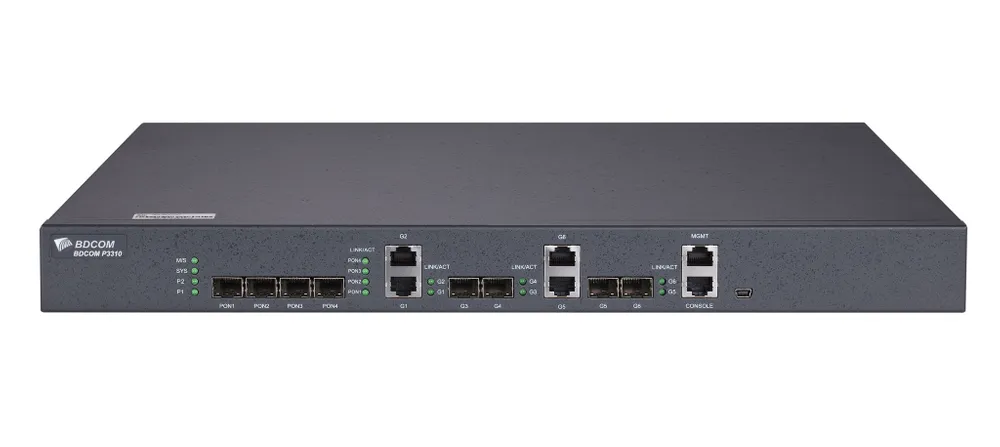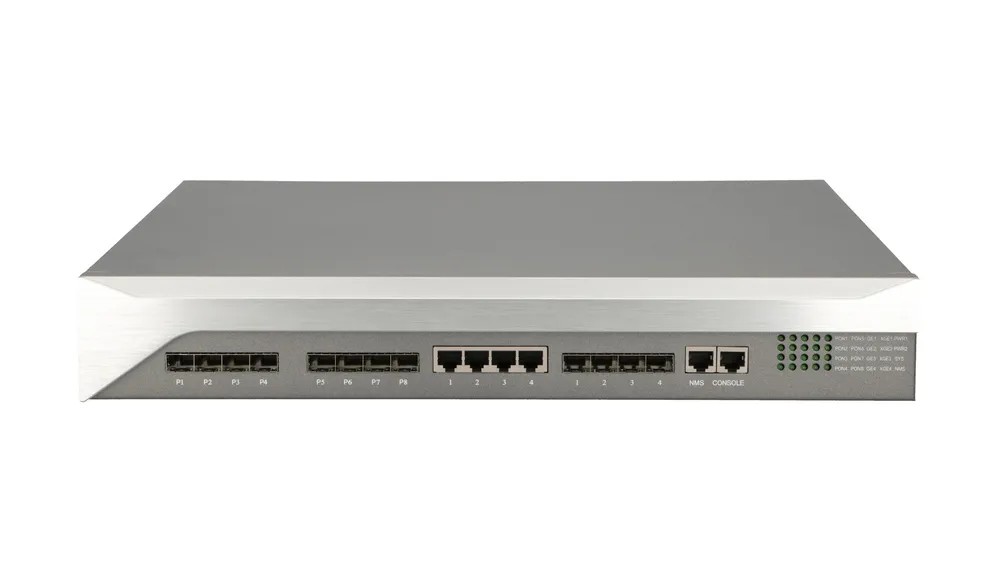What is OLT?
The OLT is a key element in fibre networks that provides a central point for the management and distribution of the optical signal to subscriber networks. It is a device that sits on the service provider's side and is used to communicate with the ONTs located at the end users' premises. The OLT manages the transmission of data, video and voice, ensuring their distribution to multiple users over a single fibre, significantly reducing infrastructure costs.
OLT types
OLTs can vary in many respects, depending on the technical specifications and network requirements. Among the main differences are the PON standards that the OLT supports, the number of PON and uplink ports, as well as additional features and expandability. A PON standard can include technologies such as EPON or GPON, differing in data transmission method and performance. The number of PON ports determines how many end units (ONTs) can be connected to a single OLT, which is crucial when planning the size and scale of the network. Additional uplink ports allow OLTs to be connected to the rest of the network, ensuring adequate bandwidth and connection reliability. In addition to these basic parameters, OLTs can offer additional features such as support for advanced network protocols, monitoring and management capabilities, and support for different network topologies.
How do you choose the right OLT?
Choosing the right OLT depends on several key factors, such as the size of the network, the number of users, bandwidth needs and specific communication standards requirements. Here are some tips on how to choose the right OLT for your network:
- Size and scale of the network: If you are managing a medium-sized network that supports a moderate number of users, an OLT with fewer ports, such as a BDCOM P3310D OLT, may be sufficient. It offers 4 PON ports, which is suitable for networks with a moderate number of customers. However, if your network grows, you may need more ports.
- PON standard: Make sure the OLT you choose is compatible with the PON standards you plan to use in your network. EPON offers high performance and reliability, which is crucial for stable network operation.
- Capacity and flexibility: For larger networks that require more capacity and flexibility, consider more advanced solutions such as Extralink Predator V2 OLT. With 8 PON ports and 4 SFP+ ports, it enables network expansion and increased throughput, which is crucial for rapidly growing networks.
- Additional features: If your network requires specific features, such as DHCP 82 support, it is worth looking at models that offer them. As this can be important for more complex network configurations.


